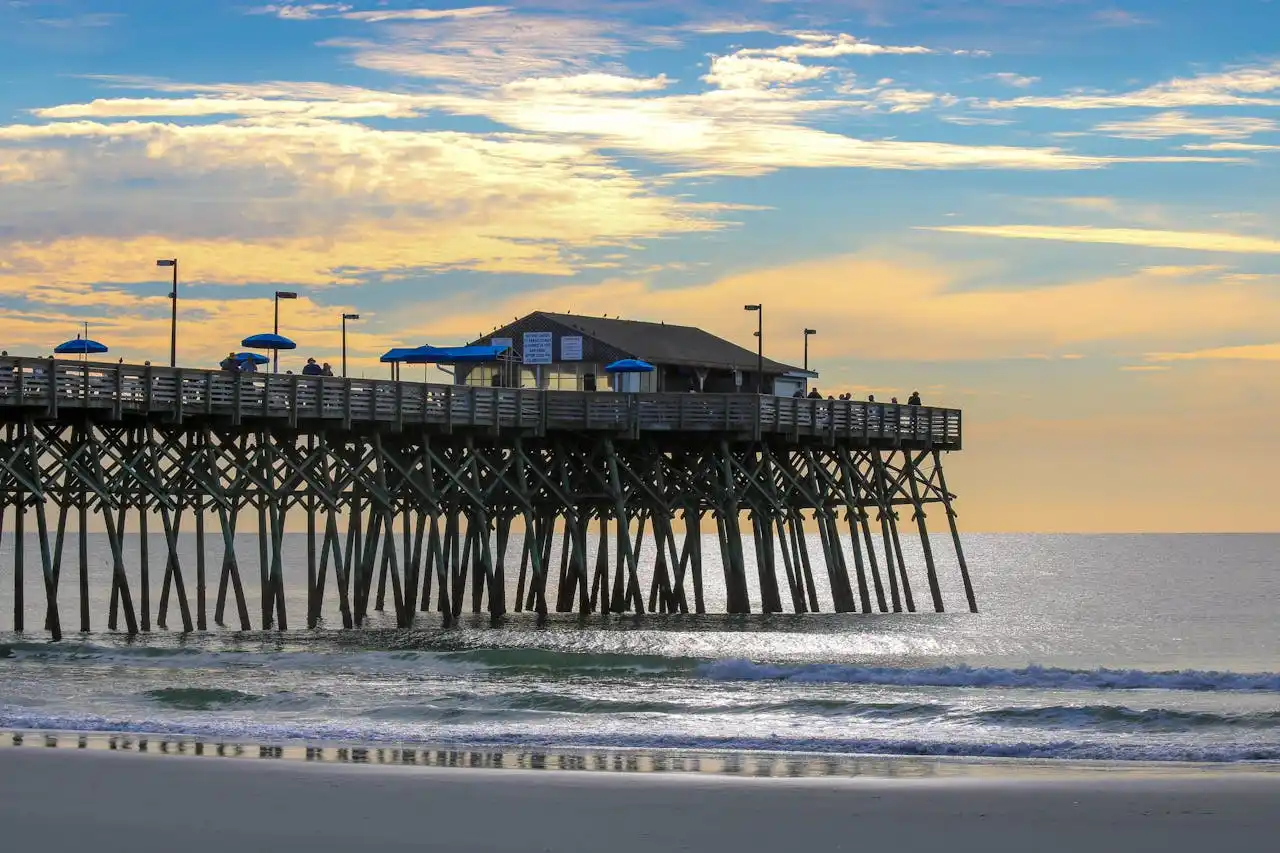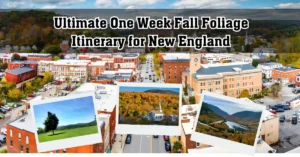The allure of South Carolina’s coastline is undeniable: sun-kissed beaches, charming towns, and a relaxed pace of life. But often, the dream of living near the ocean comes with a hefty price tag. Many guides to “affordable” South Carolina cities focus on inland locations, leaving those yearning for the salty air feeling overlooked.
This guide is different. We’re diving deep to uncover the actual cheapest places to live in South Carolina near the beach in 2025, offering practical insights and real-world considerations so you can turn your coastal dream into an affordable reality.
What “Near the Beach” Really Means in South Carolina for Your Wallet
When we talk about living “near the beach” in South Carolina, it’s crucial to understand that proximity often dictates price. A home with direct oceanfront access will almost always be in a different league of affordability than one a short drive away. Our focus here is on those accessible, affordable options that offer the coastal lifestyle without the premium cost.
Defining “Beach Proximity” and Affordability
For the purpose of this guide, “near the beach” can mean anything from a stroll to the sand to a comfortable 15-30 minute drive. The key insight? Prices drop significantly even a few miles inland from the most sought-after prime beach areas. This slight commute can translate into substantial savings on housing costs, allowing you to enjoy the benefits of coastal living without the immediate beachfront price tag.
Beyond the Usual Bills: Unique Coastal Living Costs
Living by the ocean comes with its own set of financial considerations that go beyond standard mortgages and utilities. These are crucial distinctions often missed in generic “cheapest places” lists:
- Flood Insurance: This is non-negotiable for many coastal properties and can add significantly to your monthly expenses. Depending on the flood zone designation (e.g., AE, VE, X), premiums can range from $500 to $1,500+ annually for moderate risk zones, and potentially much higher in high-risk “V” zones directly exposed to velocity waves. Understanding your property’s flood zone is paramount.
- Wind & Hail Insurance: Often separated from standard homeowners’ insurance in coastal areas, this coverage protects against hurricane-force winds and hailstorms, adding another layer of cost.
- Elevated Construction Costs: For new builds, especially in flood-prone areas, homes may need to be built on stilts or elevated foundations, increasing initial construction expenses.
- Higher Utility Costs (Potentially): The notorious South Carolina humidity can mean higher electricity bills for air conditioning, especially during the long summer months.
Our Methodology: Finding Affordable Coastal Gems
To identify the cheapest places to live near the beach in South Carolina, we’ve employed a robust methodology that specifically considers coastal living factors, contrasting with approaches that overlook proximity to the ocean.
Data Points for Coastal Affordability
Our research leverages multiple data points to give you a comprehensive picture of affordability:
- Median Home Value: Specifically for properties that offer direct beach access or are within a reasonable driving distance (typically 30 minutes or less) to public beaches.
- Median House Rent: Providing insight into rental market affordability for those not looking to buy immediately.
- Cost of Living: An overall assessment, with a focus on how factors like utilities, groceries, and transportation compare to national averages within these coastal-adjacent communities.
- Distance to Nearest Public Beach Access: A critical metric to ensure the “near the beach” promise is genuinely met.
We compile this data from reliable sources, including local MLS data, major real estate platforms, established cost of living indices, and mapping tools to verify proximity.
Top 5 Cheapest Places to Live in South Carolina Near the Beach in 2025
Here are our top picks for affordable living in coastal South Carolina, offering a blend of value, lifestyle, and genuine proximity to the sand and surf.
| City | Median Home Value | Median House Rent | Cost of Living Compared to National Average | Distance to Nearest Public Beach | Key Appeal |
|---|---|---|---|---|---|
| Conway | $279,538 | $1,800 | 9.6% lower | 15-25 min drive (Myrtle Beach) | Historic charm, river access, family-friendly, gateway to Grand Strand. |
| Garden City Beach | $320,000 (condo) | $1,500 – $2,500 | Similar to national average | Direct Beach Access | Quieter beach town, family-friendly, direct access to Murrells Inlet, specific affordable sections. |
| McClellanville | $250,000 | $1,200 | 15% lower | 45-60 min drive (Isle of Palms) | Historic fishing village, rural charm, low property values, access to waterways. |
| Port Royal | $310,000 | $1,700 | Similar to national average | 10-15 min drive (Hunting Island) | Affordable alternative to Beaufort, developing downtown, waterfront park, natural beauty. |
| Loris/Longs | $220,000 | $1,300 | 15-20% lower | 20-30 min drive (N. Myrtle Beach) | Rural setting, very low cost of living, easy access to North Grand Strand beaches, new construction. |
Please note: Median values are estimates and can fluctuate. “Similar to national average” indicates minimal percentage difference.
1. Conway: Your Affordable Gateway to the Grand Strand Beaches
While often listed as a general affordable city, Conway’s true appeal for budget coastal living lies in its strategic location. Situated on the beautiful Waccamaw River, this historic town offers a distinct, charming atmosphere with a vibrant downtown, and is a mere 15-25 minute drive to the bustling beaches of Myrtle Beach and Surfside Beach. For those who want constant beach access without paying beach-town prices, Conway provides excellent value.
- Median Home Value: Approximately $279,538
- Median House Rent: Around $1,800
- Cost of Living: 9.6% lower than the national average
- Distance to Nearest Public Beach: 15-25 minute drive to Myrtle Beach/Surfside Beach
- Key Appeal: Historic charm, educational opportunities, family-friendly amenities, and easy access to the entire Grand Strand area.
Want to learn more about life beyond the immediate shoreline? Explore our guide on Living in Conway, SC: Beyond the Beaches.
2. Garden City Beach: Direct Beach Access, Budget-Conscious Sections
Garden City Beach offers a quieter, more family-friendly atmosphere compared to its lively neighbor, Myrtle Beach. While beachfront properties command a premium, specific sections, particularly older condo complexes or bungalows situated slightly off the main strip, can present more affordable ownership or rental opportunities. You’ll find direct beach access, a popular fishing pier, and plenty of local eateries.
- Median Home Value: Condos can start around $320,000 (older units, inland side)
- Median House Rent: $1,500 – $2,500 (highly seasonal)
- Cost of Living: Similar to the national average (due to coastal premium)
- Distance to Nearest Public Beach: Direct Beach Access
- Key Appeal: Quieter beach town feel, direct beach access, proximity to Murrells Inlet’s MarshWalk.
Considering a beach condo? Check out our insights on Garden City Beach Real Estate: Condos & Homes.
3. McClellanville: Secluded Charm and True Southern Living
For those truly seeking a hidden gem and willing to trade a slightly longer drive for significant savings, McClellanville is an ideal choice. This historic fishing village embodies true Southern charm, offering a rural, tranquil lifestyle. While the drive to popular beaches like Isle of Palms or Sullivans Island is about 45-60 minutes, its very low property values, abundant access to waterways for boating and fishing, and strong sense of community make it highly appealing for budget-conscious coastal enthusiasts.
- Median Home Value: Approximately $250,000
- Median House Rent: Around $1,200
- Cost of Living: Approximately 15% lower than the national average
- Distance to Nearest Public Beach: 45-60 minute drive to Isle of Palms/Sullivans Island
- Key Appeal: Historic fishing village, very low cost of living, access to Francis Marion National Forest, unique cultural heritage.
Dive deeper into this charming community with our guide: Discovering McClellanville, SC: A Quiet Coastal Retreat.
4. Port Royal: Affordable Beaufort Living with Coastal Access
Located just outside the historic city of Beaufort, Port Royal offers a more affordable entry point into the coveted Lowcountry lifestyle. While Beaufort itself can be pricey, Port Royal provides excellent value with a developing downtown, a popular waterfront park, and easy access (10-15 minutes) to the stunning Hunting Island State Park beach. It’s a relaxed town with a strong sense of community and abundant natural beauty.
- Median Home Value: Approximately $310,000
- Median House Rent: Around $1,700
- Cost of Living: Similar to the national average
- Distance to Nearest Public Beach: 10-15 minute drive to Hunting Island State Park
- Key Appeal: Affordable alternative to Beaufort, developing downtown, natural beauty, military presence.
Compare costs and lifestyles in our detailed analysis: Port Royal vs. Beaufort: Cost of Living Comparison.
5. Loris/Longs: Inland Value, Easy Beach Commute
For those prioritizing the absolute lowest cost of living while retaining reasonable beach access, the inland towns of Loris and Longs are excellent considerations. These agriculturally-rooted communities offer significantly lower property values and overall living costs. Yet, they are only a comfortable 20-30 minute drive from the popular beaches of North Myrtle Beach, Cherry Grove, and Little River. They are often popular choices for retirees and those seeking newer construction at lower prices.
- Median Home Value: Approximately $220,000
- Median House Rent: Around $1,300
- Cost of Living: 15-20% lower than the national average
- Distance to Nearest Public Beach: 20-30 minute drive to North Myrtle Beach/Cherry Grove
- Key Appeal: Very low cost of living, rural setting, new construction opportunities, easy access to North Grand Strand beaches.
Thinking about an inland commute? Read our guide on Living Inland: Affordable Commutes to Myrtle Beach.
Key Factors Driving Affordability in Coastal South Carolina
Understanding why some coastal areas are cheaper than others is crucial for smart decision-making. It’s not just about the overall cost of living; specific coastal factors play a significant role.
Distance from the Absolute Oceanfront
This is perhaps the single biggest driver of price. A home directly on the ocean or with unhindered ocean views will almost always command a premium. Move even a few blocks, or a mile or two inland, and property values can drop dramatically. This is why towns like Conway, Loris, and Longs, while not on the immediate beachfront, offer such significant savings while still providing easy access.
Property Type & Age in Coastal Zones
The type and age of property also heavily influence cost. Older homes, often requiring some renovation, or non-oceanfront condos, particularly those with less elaborate amenities, typically offer lower entry points. Manufactured homes, common in some rural coastal-adjacent areas, also present a highly affordable option.
Flood Zones and Insurance Premiums
A critical, often overlooked, cost in coastal areas is flood insurance. The Federal Emergency Management Agency (FEMA) designates flood zones, and your property’s zone directly impacts your insurance premiums.
- “V” zones (Velocity Zones): Areas directly exposed to wave action and often located closest to the ocean. Premiums here are significantly higher.
- “A” zones (Coastal Flood Zones): Areas subject to rising water levels from storm surge or tidal flooding. These also carry higher premiums but generally less than “V” zones.
- “X” zones (Moderate to Low Risk): Areas outside the 100-year flood plain, with lower or no mandatory flood insurance requirements, resulting in significantly lower premiums.
Properties in higher-risk flood zones may be cheaper to buy upfront, but their ongoing insurance costs can quickly negate those initial savings. It’s vital to factor this into your budget. For more detailed information, consider reading our guide on Understanding Flood Insurance in South Carolina.
Hurricane Risk and Preparedness
Coastal South Carolina is susceptible to hurricanes and tropical storms, especially during hurricane season (June 1st to November 30th). This reality impacts not just insurance, but also the need for storm shutters, emergency preparedness kits, and potential evacuation costs. While not a direct “living cost,” it’s a financial and logistical consideration for anyone living near the beach.
Is the “Cheapest Beach Life” Right for You? Consider This:
Embracing an affordable coastal lifestyle in South Carolina offers incredible benefits, but it’s important to weigh the pros and cons honestly.
Pros: Your Dream Coastal Lifestyle on a Budget
- Access to Beaches: The primary draw – enjoy the sand, sun, and surf whenever you please.
- Outdoor Activities: Abundant opportunities for fishing, boating, kayaking, and watersports.
- Warm Climate: Enjoy longer periods of comfortable weather compared to many other parts of the country.
- Relaxed Pace: Experience the laid-back Southern charm and slower pace of life.
- Southern Hospitality: Friendly communities and a welcoming atmosphere.
- Potential Tax Benefits: South Carolina offers potential property tax benefits like the homestead exemption for qualifying residents.
Cons: Realities of Budget Coastal Living
- Humidity: The summers are long and can be intensely humid.
- Hurricane Season: The risk of hurricanes requires vigilance, preparedness, and potentially inconvenient evacuations.
- Insurance Costs: Flood and wind/hail insurance can significantly impact your monthly budget.
- Potential for Seasonal Job Markets: Smaller beach towns may have more seasonal employment opportunities.
- Fewer High-End Amenities: While growing, some of the most affordable areas may have fewer upscale dining or shopping options.
- Limited Public Transportation: Most areas require a car for daily commuting and beach access.
Ready to Find Your South Carolina Beach Bargain? Next Steps
Finding your affordable slice of coastal paradise in South Carolina is absolutely achievable with the right research and approach. Here are your next steps:
Visualize Your Coastal Commute
Don’t just look at maps. If you’re serious about a town, visit it. Drive the routes from the proposed affordable neighborhoods to the beach during different times of day to understand the actual commute time and traffic.
Connect with a Coastal Real Estate Specialist
This is perhaps the most crucial step. A local real estate agent who specializes in coastal properties will be invaluable. They can:
- Help you navigate flood zones and understand associated insurance costs.
- Identify properties that offer the best value for money in your desired proximity to the beach.
- Provide insights into local market nuances, specific neighborhoods, and future developments.
Ready to take the next step? Find an Expert South Carolina Coastal Real Estate Agent today!
Get Pre-Approved for Your Coastal Home Loan
Before you start seriously looking, get pre-approved for a mortgage. This will clarify your budget, demonstrate to sellers that you’re a serious buyer, and streamline the entire purchasing process.
FAQS on Cheapest Places to Live in South Carolina Near the Beach
What are the flood insurance costs in Specific Cheap Beach Town?
Flood insurance costs are highly dependent on the specific address, elevation, and designated flood zone. It’s crucial to get a personalized quote for any property you’re considering.
How far inland do you have to go to find affordable homes near Myrtle Beach?
Generally, moving 15-30 minutes inland (to areas like Conway, Loris, or Longs) can lead to significant cost savings compared to living directly on the Myrtle Beach coastline.
Are there any mobile home parks near the beach in South Carolina?
Yes, some areas near the coast, particularly slightly inland or in less developed communities, do have mobile home parks which can offer very affordable living options.
What is the average commute time from Conway to Myrtle Beach?
The commute from downtown Conway to the Myrtle Beach oceanfront is typically 20-30 minutes, depending on traffic and the specific beach access point.
Which South Carolina beach towns are best for retirees on a budget?
Conway, Loris/Longs, and Port Royal offer excellent options for retirees due to their lower cost of living, community amenities, and reasonable beach access.
How does hurricane season impact living in affordable coastal SC towns?
Hurricane season (June-November) means a heightened awareness of weather forecasts, potential evacuation orders, and the importance of having robust property insurance (including flood and wind/hail coverage).





